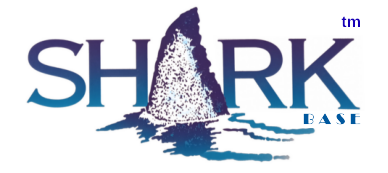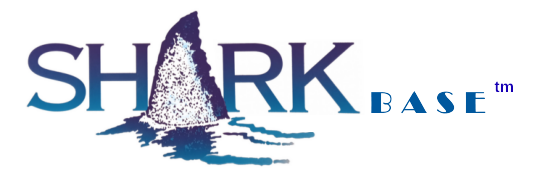WRITE Program Editor
The built-in WRITE editor is a simple built-in WordStar-type program editor for working on small Shark text and program files. It cannot handle files bigger than 20000 characters (about 18k), but it is still useful for locating and fixing run-time errors since it is designed to go to the location where the program fails at run-time. It actually goes to the line where the code fails, but in most cases that is close enough to find the error.
If you like to use a code editor such as Notepad++, a runtime error in Shark will indicate the line number where your program failed. This will be the line number in your Notepad++ editor.
The WRITE command activates the program editor:
WRITE <filename>
Options:
file name of file to be created or edited
.volume number of a volume in the current library; a numeric
expression
OFF omit header and opportunity to rename file or volume
If file or volume is not specified, the last file used is understood to be the file to edit. If no extension is specified, PRG is assumed. It's OK to use any routine programming editor, but the SHARK editor is EXTREMELY useful for debugging programs and reports since it takes you to the location of the bug or error.
The editing keys are the same as in full-screen editing. WRITE uses an 80 character "window" for its 254 character lines.
Using data and index files reduces space available for WRITE, as does running WRITE inside a program; consider running WRITE from a subroutine instead of the main routine if maximum file size is required.
Editing keys: The following is WRITE's editing screen:
SharkBase WRITER HELP
Delete and Insert Block Commands Miscellaneous
================= ==================== ====================
delete character..... Del Mark block.... Alt-B QUIT:
delete to end of line ^Y Move block.... Alt-M with save.... End, or ^W
Copy block.... Alt-C without save. ^Q
delete line.......... ^T Delete block.. Alt-D
insert line.......... ^N Remove marks.. Alt-K PRINT TEXT... ^P
insert-mode toggle... Ins tab.......... TAB Key FORMAT PROGRAM Alt-F
+------------------------ FAST CURSOR MOVEMENT --------------------------+
| end of line... ^Right Arrow page up....... PgUp top of text... ^Home |
| start of line. ^Left Arrow page down..... PgDn bottom of text ^End |
+---------------------------------------------------------------------------+
NOTES: 1. ^ is Ctrl 2. Keys in pointed brackets are on the Numeric Keypad
Left Arrow or Ctrl-S moves the cursor back one character
Right Arrow or Ctrl-D moves the cursor forward one character
Up Arrow or Ctrl-E moves the cursor to the previous line
Down Arrow or Ctrl-X moves the cursor to the next line
Ctrl-Left Arrow moves to the beginning of the line
Ctrl-Right Arrow moves to the end of the line
Ctrl-Home moves to the beginning of the document
Ctrl-End moves to the end of the document
Ctrl-N inserts a new line
Ctrl-T deletes the line
PgUp or Ctrl-R displays previous page
PgDn or Ctrl-C displays next page
BACKSPACE deletes the character to the left of the cursor
Del or Ctrl-G deletes the character on the cursor
Ctrl-Y deletes the rest of the line
Ins or Ctrl-V puts you in insert mode: what you type gets
inserted (normally, you are in overtype mode:
what you type overtypes the existing text); pressing
Ins or Ctrl-V again, puts you back into overtype mode
End or Ctrl-W quits and updates text
Ctrl-Q quits and does not update text
Ctrl-P sends entire file to printer
Alt-F formats program
Alt-H displays a help screen
To break a line into two, press Ins to get into insert mode, and press ENTER. To merge two lines, delete the end of line character. When you leave the line (with a cursor key or End), the two lines merge.
Formatting & Debugging:
Shark's WRITE editor is EXTREMELY useful for debugging programs and reports since it takes you to the location of the bug or error. Alt-F formats program files; it indents the lines in a program (PRG) file according to the program structures and capitalizes the first command verb on every line. All structures in a program file must be "balanced"; that is, every DO WHILE requires an ENDDO, etc. Every structure inside another structure must be similarly balanced. A helpful hint: use the WRITE command on the program and press Alt-F to format the file with all structure indented three spaces. If the last END command in the program does not start in column zero, with an indented line above, you know you have an unbalanced structure.
Help inside WRITE:
When using WRITE, Alt-H displays a screen of information (press any key, and the help screen disappears).
Editing new files:
Some examples:
1>WRITE test ;write TEST.PRG
1>WRITE test.txt ;write TEST.TXT
1>WRITE test.dat OFF ;write TEST.DAT with suppression of header
1>WRITE .65 ;write volume 65 in the current library
1>WRITE .num ;write volume number contained in NUM in the current
library
1>WRITE .num OFF ;write volume number contained in NUM in the current
library with suppression of header
1>WRITE .:avail ;write the next available volume (Caution: be sure to
capture this value before using this construct or
you'll never be able to find your text again.)
Editing SHARK library volumes
Note that library volumes are addressed by placing a period in front of the volume number, which can be either a numeric constant or a numeric expression. Do not confuse this usage with a decimal designation.
Embedded SHARK options
OFF causes WRITE to omit the top three lines of the screen (file name and ruler, etc.) and places the cursor at the beginning of the file in the top left corner of the current window (the entire screen if no window is active), and to save the file immediately upon sensing the End key without giving an opportunity to change the file name. WRITE OFF is used primarily as an embedded option inside programs under program control, and with an active window.
Locating a text file in your Shark files folder:
The WRITE editor defaults to the PRG folder when opening/saving program files. When working with TXT files, you may find it necessary to specify the TXT folder to assist the WRITE editor in placing/saving TXT files.
WRITE TESTFILE.TXT WRITE EDITOR replies "Error 84: Unable to create or rename a file" WRITE TXT\TESTFILE.TXT WRITE EDITOR locates and saves TXT file in TXT\ folder
Special Characters
In addition to the standard ASCII Characters available in DOS editors, you may be able to access the following useful Arrow Symbol Alt Codes which are useful when laying out menus:
↑ Up Arrow Alt+24 (Hold the 'Alt' key and press 2,4 on the Number Pad) ↓ Down Arrow Alt+25 → RightArrow Alt+26 ← Left Arrow Alt+27 ↔ Left-Right Arrow Alt+29 ↕ Up-Down Arrow Alt+18
Example:
@ 20,20 SAY CEN(' Use <↑> and <↓> to Select From List',30)
NOTE: While there are thousands of ASCII Alt Codes available in the ASCII universe, not all are accessible within Shark and/or the WRITE Editor. For example, the same symbols in MS-DOS may appear differently in vDOS. Sometimes the Keyboard numbers will give results different from the NumPad. Some trial-and-error experiments may be needed when seeking fringe symbols or effects!

